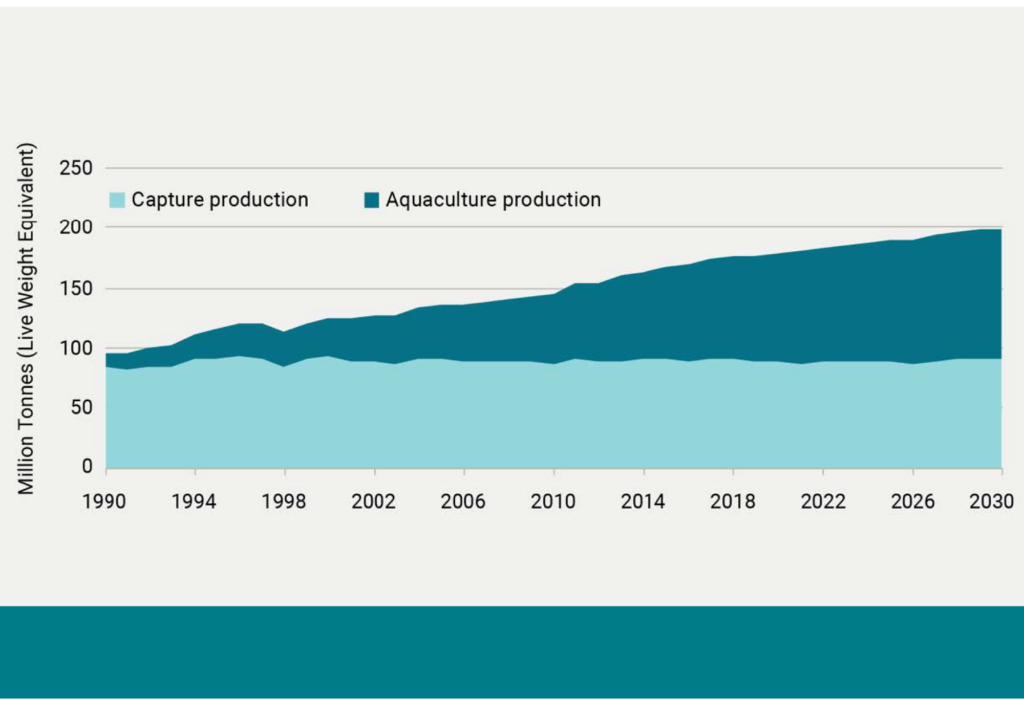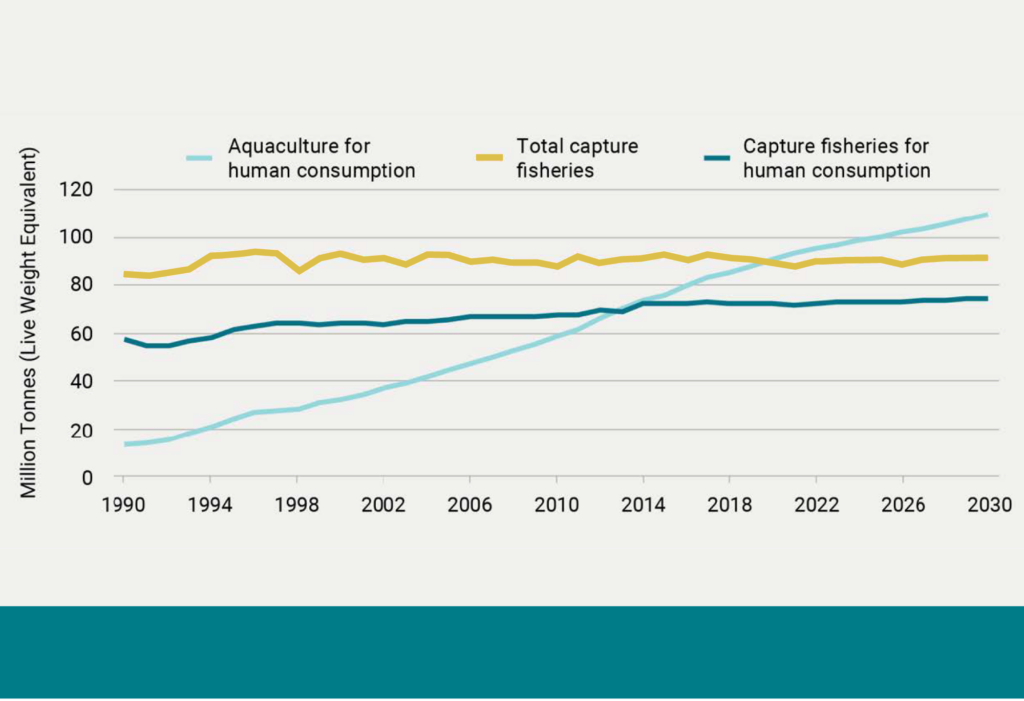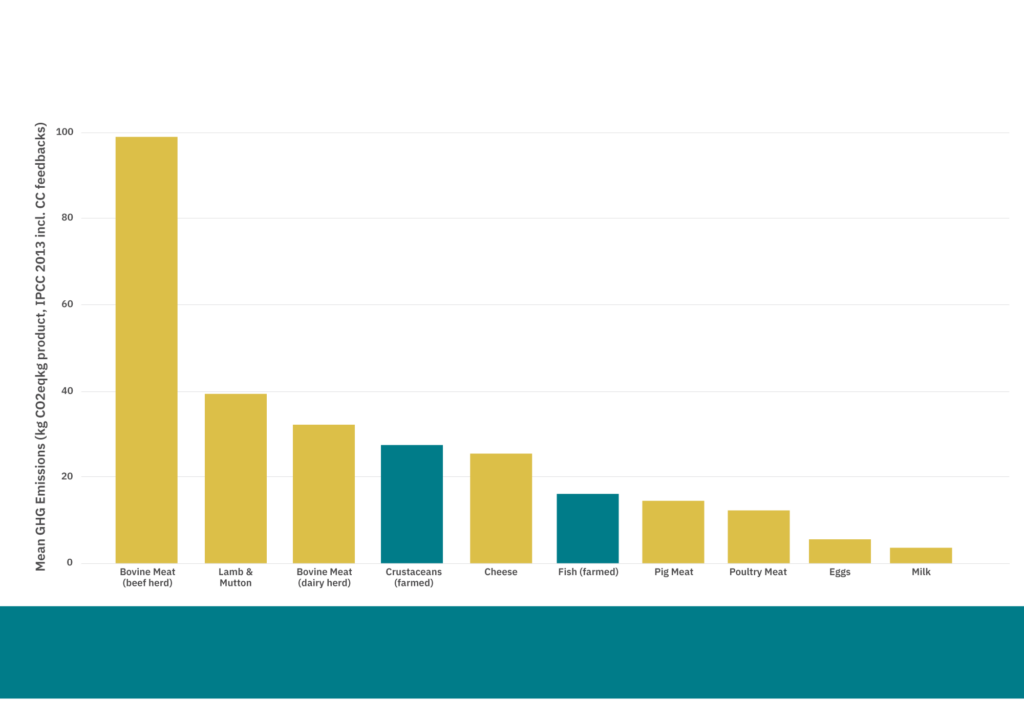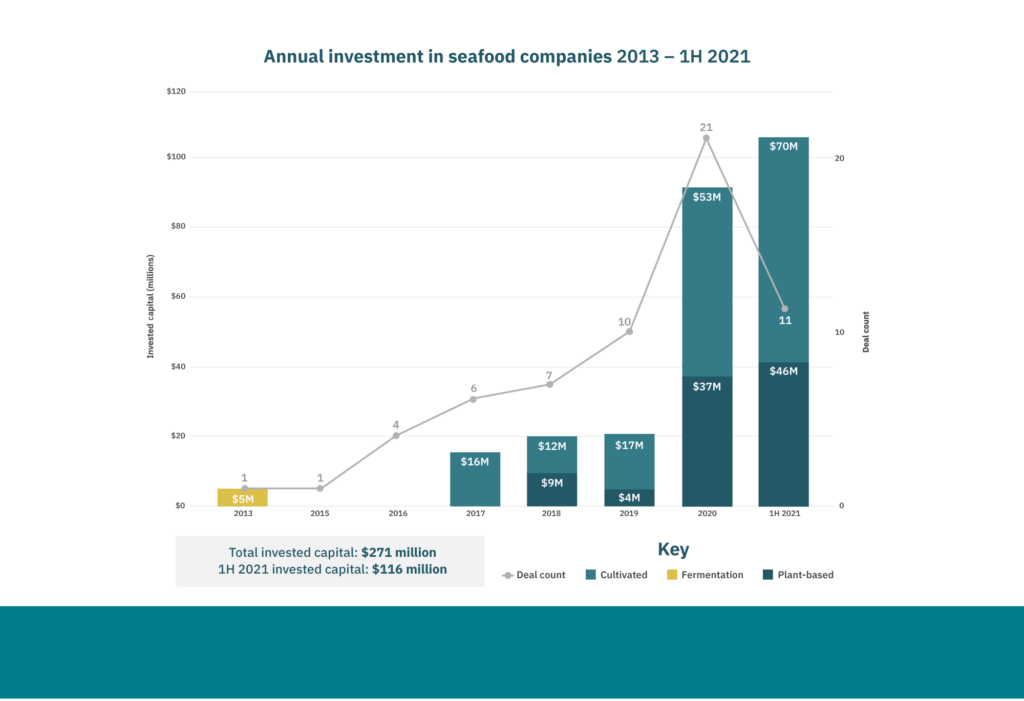
An ocean of opportunity
Plant-based and cultivated seafood for sustainable oceans without sacrifice
Discover why alternative seafood is sustainable seafood. Explore opportunities to advance the development and commercialization of plant-based and cultivated fish.
Save this document
We need scalable solutions
The health and welfare of billions of people, and indeed the stability of life on earth, depend on ecologically diverse and stable oceans.
Overfishing and marine ecosystem damage pose global threats
Global demand for seafood is projected to grow by about 30 percent between 2010 and 2030, while the quantity we can supply from our oceans declines.
One-third of all fish stocks are being depleted faster than they can replenish, and another 60 percent of stocks are already fished at the maximum sustainable level. Bycatch—the fish and marine creatures caught while fishing for a different species—represents more than 40 percent of the entire global fish catch.
Fishing also threatens ocean health. Despite covering just 0.1 percent of the seafloor, coral reefs harbor 25 percent of ocean fish species. These reefs provide up to $400 billion in economic benefits each year, but are easily damaged by bottom trawling—a common practice of dragging large fishing nets across the bottom of the ocean floor.
By destroying habitat, contributing to climate change, and threatening marine species with collapse or extinction, mismanagement of fisheries and destructive fishing techniques lead to a cascade of adverse impacts on entire ocean ecosystems. Recent research has estimated the emissions associated with seabed disruption from bottom trawling and found the practice can emit more than one gigaton of carbon dioxide equivalent in a single year, greater than the annual emissions of Germany.
Limitations of fishery management
- As fisheries near coasts are depleted, more seafood is harvested from regions where laws and regulations are difficult to enforce, despite the best of intentions for sustainable fisheries management strategies.
- Because many commercial fish species take several years to reach maturity, it can take decades for overfished or mismanaged regions to recover, even when protected.
- The total capture yield has seemingly remained the same for decades; however, total yield fails to acknowledge changes in ecological impact, resources required to maintain yield, and the amount of illegal fishing that occurs. Commercial fishing vessels now travel twice as far as they did in the 1950s but harvest less than a third of what they used to per kilometer.
Aquaculture cannot sustainably meet the growing global demand for seafood
Aquaculture is a relatively new phenomenon. Approximately half of all freshwater and marine farmed species have been domesticated within just the last 30 years. The aquaculture industry has exhibited a meteoric rise in recent years, masking and overcompensating for declining wild-caught harvests.
Limitations of aquaculture systems
- Aquaculture growth and intensification come with several concerns, including animal waste pollution, the emergence of multi-drug-resistant bacterial strains, and animal welfare.
- Although innovations in fish-free feed formulations and fish-free omega-3 production show promise for reducing reliance on wild fish, the aquaculture industry is still heavily dependent upon wild-caught biomass to supply its feed.
- Some aquaculture facilities use more sustainable practices and risk-mitigation strategies such as antibiotic-free growth, lower stocking densities, and avoidance of sensitive habitats. However, the vast majority of the aquaculture industry’s growth occurs in regions where these best practices are seldom observed.
- From a practical standpoint, many desirable species of marine animals simply cannot be reared in captivity.
Additionally, aquaculture growth is only anticipated to keep pace with increased demand for 17 countries while around 170 countries will be left with substantial unmet demand. As a result, experts project a severe demand-supply gap. To meet global demand for seafood sustainably, we urgently need new approaches.
Food technology and commercial innovation can drive market-based solutions
Plant-based, cultivated, and fermentation-derived seafood can provide consumers with delicious, nutritious, and affordable seafood products without sacrifice.
Plant-based seafood is made from plant-derived ingredients processed to replicate the taste and texture of seafood. Cultivated seafood is made by cultivating cells from aquatic animals. Fermentation involves harnessing microorganisms, such as yeast, to efficiently produce ingredients for plant-based and cultivated products, or to be processed directly into seafood products.
Why alternative seafood?
- Minimal reliance on—or limitation from—wild population productivity or geographical considerations: Alternative seafood production relies on consistent manufacturing and raw material inputs with robust supply chains and unconstrained supply. Manufacturing facilities for plant-based, cultivated, and fermentation-derived seafood need not be constructed near sensitive, expensive, and overburdened coastal areas.
- Highly efficient inputs: Products can be made from highly efficient protein sources, such as fungi, with the potential to use byproduct streams and residual biomass from other agricultural or biological industries as feedstocks.
- Safer end-products: Fish and shellfish are two of the eight most common food allergens, causing more than 90 percent of food allergic reaction episodes in the U.S. Plant-based and fermentation-derived seafood (though, in most cases, not cultivated seafood) will be safe for those with seafood allergies. Additionally, some people limit seafood consumption due to concerns about high levels of mercury and other toxins, and the FDA advises those who are pregnant or breastfeeding to avoid certain species of fish completely.
- Reduced loss in the supply chain: Plant-based items have a longer shelf life and can reduce the need for costly refrigerated transportation while providing an attractive opportunity for local production in landlocked areas. Furthermore, the production processes for all alternative seafood are more controllable and predictable, allowing for better real-time response to demand and for much more customized end products that precisely meet consumer needs. More valuable cuts, product formats, and species of seafood products could be produced without generating low-value byproduct waste.
These benefits create an opportunity for alternative seafood to provide a healthier and, ultimately, a less expensive choice than conventional seafood.
Open-access research can advance alternative seafood.
Very little dedicated funding outside of a few companies’ R&D budgets has been expended in this area. And the estimated total global R&D expenditure to date across all forms of alternative seafood is likely less than $100 million.
Thus, this industry exhibits tremendous potential to benefit from concerted public and private resource allocation.
Research opportunities to accelerate alternative seafood:
- Consumer research providing a more nuanced understanding of seafood purchasing behavior across diverse consumer segments and cultures will enable refinement of marketing and product development strategies.
- The entire plant-based and cultivated seafood industry will benefit from the availability of a detailed molecular and cellular characterization of many seafood products.
- There is a substantial need to develop the tools and resources that are already well-established for mammalian cell culture, such as cell lines, robust protocols, commercial reagents, transformation vectors and reporters, full genome sequences, and biomolecular datasets for cells derived from aquatic species.
For our oceans to survive, we must accelerate alternative seafood. We need more research to successfully develop and commercialize plant-based and cultivated seafood products that compete with the taste, price, accessibility, and nutritional quality of their conventional counterparts.
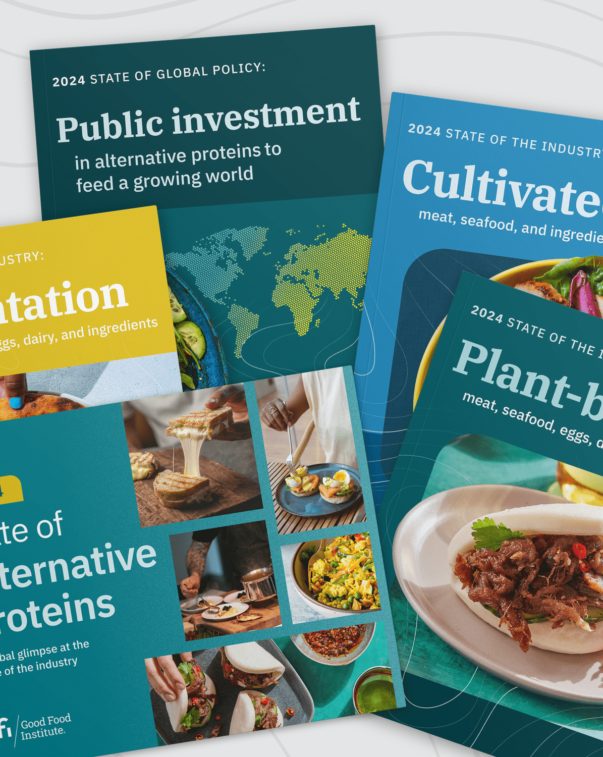
Page
State of Alternative Protein series
Explore our comprehensive State of Alternative Proteins series for insights into the rapidly evolving alternative protein landscape.
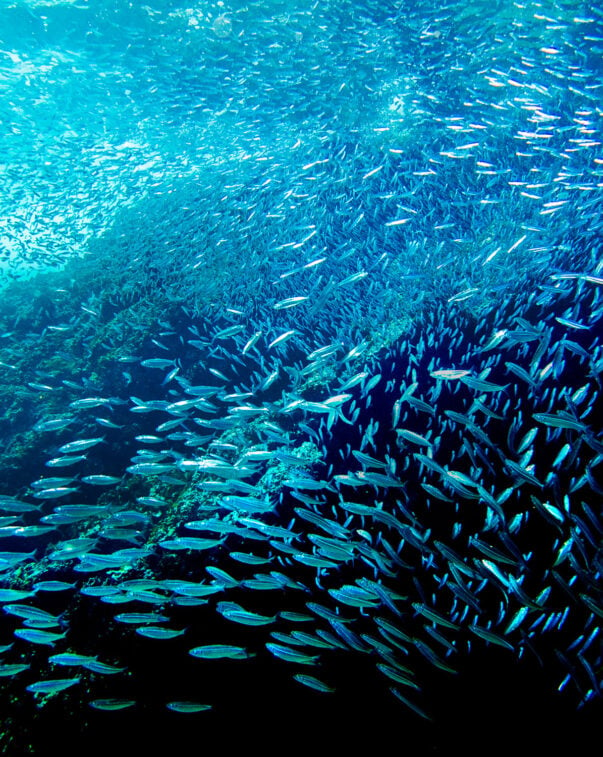
Page
Sustainable Seafood Initiative
Learn how plant-based, fermentation-derived, and cultivated seafood can improve the health and sustainability of oceans.

Resource
Alternative Protein Opportunity Newsletter
This monthly newsletter covers the latest plant-based industry news, market and consumer research, policy updates, helpful resources, and upcoming events.
Related resources

Aggregating data for alternative seafood
Use our open-access databases to explore how scientific taxonomies and evolutionary relationships map onto culinary categories of seafood.
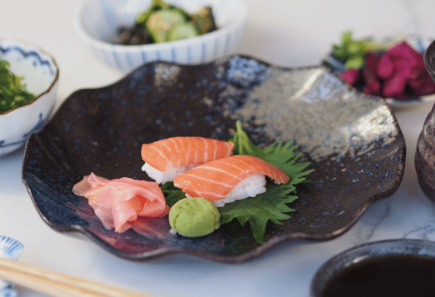
Consumer attitudes toward alternative seafood
Alternative seafood is a clear market opportunity. To date, little research has been conducted in this area. To fill this gap and strengthen the alternative seafood innovation ecosystem, GFI partnered…

Expanding access to cell lines
Limited access to cell lines is a significant challenge for cultivated meat research. GFI is working to expand access and support the development of new cell lines.
